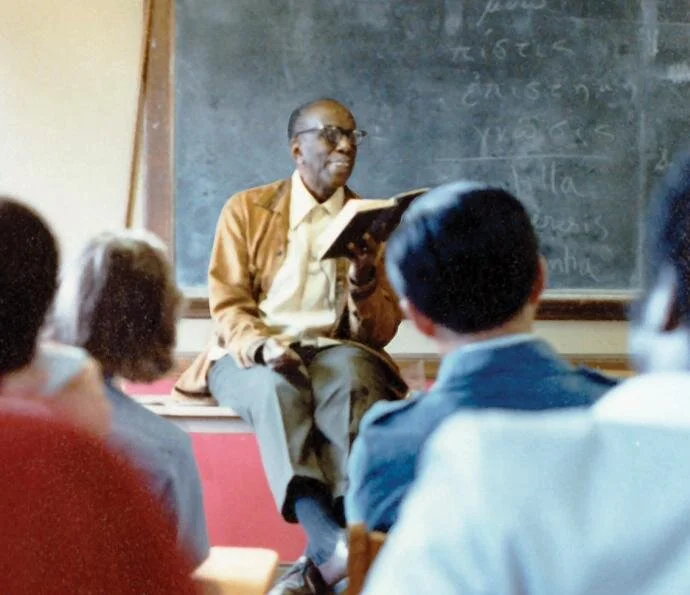On the Beatitudes and Living in the Here and Now: Part Four—Almost to Advent
“This is the season of almost. We learn to sit in the glow of a long Advent, the shorter days and endless nights. This is the season for all of us who need that extra hour of darkness…..to feel the immensity of what we’ve gained and what we’ve lost.”
I. We all know about what it means to wait, a “skill” we learned when we were young. Depending on how we were taught and how willing we were to learn, we grew up knowing about waiting. Maybe we do the best we can and struggle a bit and maybe we are masterful waiters. We can all think of similar things or people we await or have waited for over the years. In all these endless instances of our waiting for this or for that or for whom, we recognize, as Kate Bowler suggests, that waiting is always about the “almost.” The critical questions in all of this waiting are how we wait and whether we really know what or whom we are waiting for.
II. Though not obvious, the questions above bring us to the purpose of the Beatitudes. In the Friday Reflections over these weeks, including today’s fourth and final one, I have linked the Beatitudes to the “here and now” of our everyday lives. Further, I have suggested that the Beatitudes can serve as the main tenets of an examination of conscience for how we are living our lives as human beings who are Christians, and can serve as a set of guiding moral, ethical, and spiritual benchmarks. And I explained that our “guide” is really Jesus himself and how he lives his life, as revealed in the Gospels, and we identified Chapters 5-7 of Matthew as a “primary source.” Joan Chittister has this to say about such a way of understanding: What Jesus taught us to develop are the attitudes tried and true that it takes to deal with...facts. The Scriptures calls them “beatitudes” meaning attitudes that bring “happiness” or “fortunate attitudes.” Clearly, the Beatitudes shape us as people. They bring us to emotional maturity. They build the kind of self-restraint in us that makes any situation able to be handled (from The National Catholic Reporter, November 11, 2021). If we face the reality of the here and now, we can acknowledge that the “facts” Joan Chittister is referencing are really the truths that we sometimes prefer not to deal with. It is the Beatitudes that can help us face and do something about these truths. And we must remind ourselves that facts, true or not, have consequences.
III. What we often lose sight of is that “waiting” can, and maybe ought to, become “preparing.” This is surely the case with Advent, when waiting is preparing. Let’s put it another way: Advent is that period in the church year when we know who and what we are waiting for. It is the Incarnation that we are waiting for and it is Jesus Christ for whom we are waiting. If we remind ourselves that we are waiting for the Incarnation, then, through the grace of the Holy Spirit, our waiting can become a holy waiting, and holy waiting can lead us to wonder if we are really prepared for the coming of Jesus. It is this period of wondering that we call Advent: four weeks of holy waiting; four weeks of taking a measure of our engagement with the here and now; four weeks of taking stock of ourselves using the Beatitudes as our instrument. This is all preparation. And holy waiting can also involve a prayer of contemplation. Walter Burghardt, the distinguished theologian and literary scholar has called contemplation a “long, loving, look at the real,” a very rich description of both Advent itself, the “holy waiting” that comes with it, and the real that is the here and now of facts, true or not.
IV. How, then, do we understand the “real” of Advent and our holy waiting? Some years ago, Pope Francis proposed what he called “Six New Beatitudes for Saints of a New Age.” I present them here as a set of benchmarks for the holy waiting that comes with Advent and our preparation for the coming of Jesus in the great mystery of the Incarnation.
Blessed are those who remain faithful while enduring evils inflicted on them by others and forgive them from their heart.
Blessed are those who look into the eyes of the abandoned and marginalized and show them their closeness.
Blessed are those who see God in every person and strive to make others also discover Him.
Blessed are those who protect and care for our common home.
Blessed are those who renounce their own comfort in order to help others.
Blessed are those who pray and work for full communion between Christians.
(Catholic News Service, November 1, 2016)
V. Imagine including these” Modern Beatitudes” as part of our Holy Waiting, our contemplation, and our preparation for the Incarnation. Let us pray that we rediscover in the here and now the “real” that Walter Burghardt describes above. All that in the four weeks of “almost” to come.
On to Advent!
— Father Peter










